-
EXECUTIVE SUMMARY
-
Market Overview
-
Key Findings
-
Market Segmentation
-
Competitive Landscape
-
Challenges and Opportunities
-
Future Outlook
-
MARKET INTRODUCTION
-
Definition
-
Scope of the study
- Research Objective
- Assumption
- Limitations
-
RESEARCH METHODOLOGY
-
Overview
-
Data Mining
-
Secondary Research
-
Primary Research
- Primary Interviews and Information Gathering Process
- Breakdown of Primary Respondents
-
Forecasting Model
-
Market Size Estimation
- Bottom-Up Approach
- Top-Down Approach
-
Data Triangulation
-
Validation
-
MARKET DYNAMICS
-
Overview
-
Drivers
-
Restraints
-
Opportunities
-
MARKET FACTOR ANALYSIS
-
Value chain Analysis
-
Porter's Five Forces Analysis
- Bargaining Power of Suppliers
- Bargaining Power of Buyers
- Threat of New Entrants
- Threat of Substitutes
- Intensity of Rivalry
-
COVID-19 Impact Analysis
- Market Impact Analysis
- Regional Impact
- Opportunity and Threat Analysis
-
DIGITAL CAMERA MARKET, BY PRODUCT TYPE (USD BILLION)
-
Single Reflex
-
Non-Reflex
-
DIGITAL CAMERA MARKET, BY LENS TYPE (USD BILLION)
-
Fixed Lens
-
Interchangeable Lens
-
DIGITAL CAMERA MARKET, BY SENSING TECHNOLOGY (USD BILLION)
-
CCD
-
CMOS
-
DIGITAL CAMERA MARKET, BY APPLICATION (USD BILLION)
-
Personal
-
Professional
-
DIGITAL CAMERA MARKET, BY REGIONAL (USD BILLION)
-
North America
- US
- Canada
-
Europe
- Germany
- UK
- France
- Russia
- Italy
- Spain
- Rest of Europe
-
APAC
- China
- India
- Japan
- South Korea
- Malaysia
- Thailand
- Indonesia
- Rest of APAC
-
South America
- Brazil
- Mexico
- Argentina
- Rest of South America
-
MEA
- GCC Countries
- South Africa
- Rest of MEA
-
COMPETITIVE LANDSCAPE
-
Overview
-
Competitive Analysis
-
Market share Analysis
-
Major Growth Strategy in the Digital Camera Market
-
Competitive Benchmarking
-
Leading Players in Terms of Number of Developments in the Digital Camera Market
-
Key developments and growth strategies
- New Product Launch/Service Deployment
- Merger & Acquisitions
- Joint Ventures
-
Major Players Financial Matrix
- Sales and Operating Income
- Major Players R&D Expenditure. 2023
-
COMPANY PROFILES
-
Leica
- Financial Overview
- Products Offered
- Key Developments
- SWOT Analysis
- Key Strategies
-
Nikon
- Financial Overview
- Products Offered
- Key Developments
- SWOT Analysis
- Key Strategies
-
Canon
- Financial Overview
- Products Offered
- Key Developments
- SWOT Analysis
- Key Strategies
-
Fujifilm
- Financial Overview
- Products Offered
- Key Developments
- SWOT Analysis
- Key Strategies
-
Samsung
- Financial Overview
- Products Offered
- Key Developments
- SWOT Analysis
- Key Strategies
-
Sony
- Financial Overview
- Products Offered
- Key Developments
- SWOT Analysis
- Key Strategies
-
GoPro
- Financial Overview
- Products Offered
- Key Developments
- SWOT Analysis
- Key Strategies
-
KODAK
- Financial Overview
- Products Offered
- Key Developments
- SWOT Analysis
- Key Strategies
-
Vivo
- Financial Overview
- Products Offered
- Key Developments
- SWOT Analysis
- Key Strategies
-
Xiaomi
- Financial Overview
- Products Offered
- Key Developments
- SWOT Analysis
- Key Strategies
-
Olympus
- Financial Overview
- Products Offered
- Key Developments
- SWOT Analysis
- Key Strategies
-
DJI
- Financial Overview
- Products Offered
- Key Developments
- SWOT Analysis
- Key Strategies
-
Ricoh
- Financial Overview
- Products Offered
- Key Developments
- SWOT Analysis
- Key Strategies
-
Polaroid
- Financial Overview
- Products Offered
- Key Developments
- SWOT Analysis
- Key Strategies
-
Panasonic
- Financial Overview
- Products Offered
- Key Developments
- SWOT Analysis
- Key Strategies
-
APPENDIX
-
References
-
Related Reports
-
LIST OF TABLES
-
LIST OF ASSUMPTIONS
-
NORTH AMERICA DIGITAL CAMERA MARKET SIZE ESTIMATES & FORECAST, BY PRODUCT TYPE, 2019-2035 (USD BILLIONS)
-
NORTH AMERICA DIGITAL CAMERA MARKET SIZE ESTIMATES & FORECAST, BY LENS TYPE, 2019-2035 (USD BILLIONS)
-
NORTH AMERICA DIGITAL CAMERA MARKET SIZE ESTIMATES & FORECAST, BY SENSING TECHNOLOGY, 2019-2035 (USD BILLIONS)
-
NORTH AMERICA DIGITAL CAMERA MARKET SIZE ESTIMATES & FORECAST, BY APPLICATION, 2019-2035 (USD BILLIONS)
-
NORTH AMERICA DIGITAL CAMERA MARKET SIZE ESTIMATES & FORECAST, BY REGIONAL, 2019-2035 (USD BILLIONS)
-
US DIGITAL CAMERA MARKET SIZE ESTIMATES & FORECAST, BY PRODUCT TYPE, 2019-2035 (USD BILLIONS)
-
US DIGITAL CAMERA MARKET SIZE ESTIMATES & FORECAST, BY LENS TYPE, 2019-2035 (USD BILLIONS)
-
US DIGITAL CAMERA MARKET SIZE ESTIMATES & FORECAST, BY SENSING TECHNOLOGY, 2019-2035 (USD BILLIONS)
-
US DIGITAL CAMERA MARKET SIZE ESTIMATES & FORECAST, BY APPLICATION, 2019-2035 (USD BILLIONS)
-
US DIGITAL CAMERA MARKET SIZE ESTIMATES & FORECAST, BY REGIONAL, 2019-2035 (USD BILLIONS)
-
CANADA DIGITAL CAMERA MARKET SIZE ESTIMATES & FORECAST, BY PRODUCT TYPE, 2019-2035 (USD BILLIONS)
-
CANADA DIGITAL CAMERA MARKET SIZE ESTIMATES & FORECAST, BY LENS TYPE, 2019-2035 (USD BILLIONS)
-
CANADA DIGITAL CAMERA MARKET SIZE ESTIMATES & FORECAST, BY SENSING TECHNOLOGY, 2019-2035 (USD BILLIONS)
-
CANADA DIGITAL CAMERA MARKET SIZE ESTIMATES & FORECAST, BY APPLICATION, 2019-2035 (USD BILLIONS)
-
CANADA DIGITAL CAMERA MARKET SIZE ESTIMATES & FORECAST, BY REGIONAL, 2019-2035 (USD BILLIONS)
-
EUROPE DIGITAL CAMERA MARKET SIZE ESTIMATES & FORECAST, BY PRODUCT TYPE, 2019-2035 (USD BILLIONS)
-
EUROPE DIGITAL CAMERA MARKET SIZE ESTIMATES & FORECAST, BY LENS TYPE, 2019-2035 (USD BILLIONS)
-
EUROPE DIGITAL CAMERA MARKET SIZE ESTIMATES & FORECAST, BY SENSING TECHNOLOGY, 2019-2035 (USD BILLIONS)
-
EUROPE DIGITAL CAMERA MARKET SIZE ESTIMATES & FORECAST, BY APPLICATION, 2019-2035 (USD BILLIONS)
-
EUROPE DIGITAL CAMERA MARKET SIZE ESTIMATES & FORECAST, BY REGIONAL, 2019-2035 (USD BILLIONS)
-
GERMANY DIGITAL CAMERA MARKET SIZE ESTIMATES & FORECAST, BY PRODUCT TYPE, 2019-2035 (USD BILLIONS)
-
GERMANY DIGITAL CAMERA MARKET SIZE ESTIMATES & FORECAST, BY LENS TYPE, 2019-2035 (USD BILLIONS)
-
GERMANY DIGITAL CAMERA MARKET SIZE ESTIMATES & FORECAST, BY SENSING TECHNOLOGY, 2019-2035 (USD BILLIONS)
-
GERMANY DIGITAL CAMERA MARKET SIZE ESTIMATES & FORECAST, BY APPLICATION, 2019-2035 (USD BILLIONS)
-
GERMANY DIGITAL CAMERA MARKET SIZE ESTIMATES & FORECAST, BY REGIONAL, 2019-2035 (USD BILLIONS)
-
UK DIGITAL CAMERA MARKET SIZE ESTIMATES & FORECAST, BY PRODUCT TYPE, 2019-2035 (USD BILLIONS)
-
UK DIGITAL CAMERA MARKET SIZE ESTIMATES & FORECAST, BY LENS TYPE, 2019-2035 (USD BILLIONS)
-
UK DIGITAL CAMERA MARKET SIZE ESTIMATES & FORECAST, BY SENSING TECHNOLOGY, 2019-2035 (USD BILLIONS)
-
UK DIGITAL CAMERA MARKET SIZE ESTIMATES & FORECAST, BY APPLICATION, 2019-2035 (USD BILLIONS)
-
UK DIGITAL CAMERA MARKET SIZE ESTIMATES & FORECAST, BY REGIONAL, 2019-2035 (USD BILLIONS)
-
FRANCE DIGITAL CAMERA MARKET SIZE ESTIMATES & FORECAST, BY PRODUCT TYPE, 2019-2035 (USD BILLIONS)
-
FRANCE DIGITAL CAMERA MARKET SIZE ESTIMATES & FORECAST, BY LENS TYPE, 2019-2035 (USD BILLIONS)
-
FRANCE DIGITAL CAMERA MARKET SIZE ESTIMATES & FORECAST, BY SENSING TECHNOLOGY, 2019-2035 (USD BILLIONS)
-
FRANCE DIGITAL CAMERA MARKET SIZE ESTIMATES & FORECAST, BY APPLICATION, 2019-2035 (USD BILLIONS)
-
FRANCE DIGITAL CAMERA MARKET SIZE ESTIMATES & FORECAST, BY REGIONAL, 2019-2035 (USD BILLIONS)
-
RUSSIA DIGITAL CAMERA MARKET SIZE ESTIMATES & FORECAST, BY PRODUCT TYPE, 2019-2035 (USD BILLIONS)
-
RUSSIA DIGITAL CAMERA MARKET SIZE ESTIMATES & FORECAST, BY LENS TYPE, 2019-2035 (USD BILLIONS)
-
RUSSIA DIGITAL CAMERA MARKET SIZE ESTIMATES & FORECAST, BY SENSING TECHNOLOGY, 2019-2035 (USD BILLIONS)
-
RUSSIA DIGITAL CAMERA MARKET SIZE ESTIMATES & FORECAST, BY APPLICATION, 2019-2035 (USD BILLIONS)
-
RUSSIA DIGITAL CAMERA MARKET SIZE ESTIMATES & FORECAST, BY REGIONAL, 2019-2035 (USD BILLIONS)
-
ITALY DIGITAL CAMERA MARKET SIZE ESTIMATES & FORECAST, BY PRODUCT TYPE, 2019-2035 (USD BILLIONS)
-
ITALY DIGITAL CAMERA MARKET SIZE ESTIMATES & FORECAST, BY LENS TYPE, 2019-2035 (USD BILLIONS)
-
ITALY DIGITAL CAMERA MARKET SIZE ESTIMATES & FORECAST, BY SENSING TECHNOLOGY, 2019-2035 (USD BILLIONS)
-
ITALY DIGITAL CAMERA MARKET SIZE ESTIMATES & FORECAST, BY APPLICATION, 2019-2035 (USD BILLIONS)
-
ITALY DIGITAL CAMERA MARKET SIZE ESTIMATES & FORECAST, BY REGIONAL, 2019-2035 (USD BILLIONS)
-
SPAIN DIGITAL CAMERA MARKET SIZE ESTIMATES & FORECAST, BY PRODUCT TYPE, 2019-2035 (USD BILLIONS)
-
SPAIN DIGITAL CAMERA MARKET SIZE ESTIMATES & FORECAST, BY LENS TYPE, 2019-2035 (USD BILLIONS)
-
SPAIN DIGITAL CAMERA MARKET SIZE ESTIMATES & FORECAST, BY SENSING TECHNOLOGY, 2019-2035 (USD BILLIONS)
-
SPAIN DIGITAL CAMERA MARKET SIZE ESTIMATES & FORECAST, BY APPLICATION, 2019-2035 (USD BILLIONS)
-
SPAIN DIGITAL CAMERA MARKET SIZE ESTIMATES & FORECAST, BY REGIONAL, 2019-2035 (USD BILLIONS)
-
REST OF EUROPE DIGITAL CAMERA MARKET SIZE ESTIMATES & FORECAST, BY PRODUCT TYPE, 2019-2035 (USD BILLIONS)
-
REST OF EUROPE DIGITAL CAMERA MARKET SIZE ESTIMATES & FORECAST, BY LENS TYPE, 2019-2035 (USD BILLIONS)
-
REST OF EUROPE DIGITAL CAMERA MARKET SIZE ESTIMATES & FORECAST, BY SENSING TECHNOLOGY, 2019-2035 (USD BILLIONS)
-
REST OF EUROPE DIGITAL CAMERA MARKET SIZE ESTIMATES & FORECAST, BY APPLICATION, 2019-2035 (USD BILLIONS)
-
REST OF EUROPE DIGITAL CAMERA MARKET SIZE ESTIMATES & FORECAST, BY REGIONAL, 2019-2035 (USD BILLIONS)
-
APAC DIGITAL CAMERA MARKET SIZE ESTIMATES & FORECAST, BY PRODUCT TYPE, 2019-2035 (USD BILLIONS)
-
APAC DIGITAL CAMERA MARKET SIZE ESTIMATES & FORECAST, BY LENS TYPE, 2019-2035 (USD BILLIONS)
-
APAC DIGITAL CAMERA MARKET SIZE ESTIMATES & FORECAST, BY SENSING TECHNOLOGY, 2019-2035 (USD BILLIONS)
-
APAC DIGITAL CAMERA MARKET SIZE ESTIMATES & FORECAST, BY APPLICATION, 2019-2035 (USD BILLIONS)
-
APAC DIGITAL CAMERA MARKET SIZE ESTIMATES & FORECAST, BY REGIONAL, 2019-2035 (USD BILLIONS)
-
CHINA DIGITAL CAMERA MARKET SIZE ESTIMATES & FORECAST, BY PRODUCT TYPE, 2019-2035 (USD BILLIONS)
-
CHINA DIGITAL CAMERA MARKET SIZE ESTIMATES & FORECAST, BY LENS TYPE, 2019-2035 (USD BILLIONS)
-
CHINA DIGITAL CAMERA MARKET SIZE ESTIMATES & FORECAST, BY SENSING TECHNOLOGY, 2019-2035 (USD BILLIONS)
-
CHINA DIGITAL CAMERA MARKET SIZE ESTIMATES & FORECAST, BY APPLICATION, 2019-2035 (USD BILLIONS)
-
CHINA DIGITAL CAMERA MARKET SIZE ESTIMATES & FORECAST, BY REGIONAL, 2019-2035 (USD BILLIONS)
-
INDIA DIGITAL CAMERA MARKET SIZE ESTIMATES & FORECAST, BY PRODUCT TYPE, 2019-2035 (USD BILLIONS)
-
INDIA DIGITAL CAMERA MARKET SIZE ESTIMATES & FORECAST, BY LENS TYPE, 2019-2035 (USD BILLIONS)
-
INDIA DIGITAL CAMERA MARKET SIZE ESTIMATES & FORECAST, BY SENSING TECHNOLOGY, 2019-2035 (USD BILLIONS)
-
INDIA DIGITAL CAMERA MARKET SIZE ESTIMATES & FORECAST, BY APPLICATION, 2019-2035 (USD BILLIONS)
-
INDIA DIGITAL CAMERA MARKET SIZE ESTIMATES & FORECAST, BY REGIONAL, 2019-2035 (USD BILLIONS)
-
JAPAN DIGITAL CAMERA MARKET SIZE ESTIMATES & FORECAST, BY PRODUCT TYPE, 2019-2035 (USD BILLIONS)
-
JAPAN DIGITAL CAMERA MARKET SIZE ESTIMATES & FORECAST, BY LENS TYPE, 2019-2035 (USD BILLIONS)
-
JAPAN DIGITAL CAMERA MARKET SIZE ESTIMATES & FORECAST, BY SENSING TECHNOLOGY, 2019-2035 (USD BILLIONS)
-
JAPAN DIGITAL CAMERA MARKET SIZE ESTIMATES & FORECAST, BY APPLICATION, 2019-2035 (USD BILLIONS)
-
JAPAN DIGITAL CAMERA MARKET SIZE ESTIMATES & FORECAST, BY REGIONAL, 2019-2035 (USD BILLIONS)
-
SOUTH KOREA DIGITAL CAMERA MARKET SIZE ESTIMATES & FORECAST, BY PRODUCT TYPE, 2019-2035 (USD BILLIONS)
-
SOUTH KOREA DIGITAL CAMERA MARKET SIZE ESTIMATES & FORECAST, BY LENS TYPE, 2019-2035 (USD BILLIONS)
-
SOUTH KOREA DIGITAL CAMERA MARKET SIZE ESTIMATES & FORECAST, BY SENSING TECHNOLOGY, 2019-2035 (USD BILLIONS)
-
SOUTH KOREA DIGITAL CAMERA MARKET SIZE ESTIMATES & FORECAST, BY APPLICATION, 2019-2035 (USD BILLIONS)
-
SOUTH KOREA DIGITAL CAMERA MARKET SIZE ESTIMATES & FORECAST, BY REGIONAL, 2019-2035 (USD BILLIONS)
-
MALAYSIA DIGITAL CAMERA MARKET SIZE ESTIMATES & FORECAST, BY PRODUCT TYPE, 2019-2035 (USD BILLIONS)
-
MALAYSIA DIGITAL CAMERA MARKET SIZE ESTIMATES & FORECAST, BY LENS TYPE, 2019-2035 (USD BILLIONS)
-
MALAYSIA DIGITAL CAMERA MARKET SIZE ESTIMATES & FORECAST, BY SENSING TECHNOLOGY, 2019-2035 (USD BILLIONS)
-
MALAYSIA DIGITAL CAMERA MARKET SIZE ESTIMATES & FORECAST, BY APPLICATION, 2019-2035 (USD BILLIONS)
-
MALAYSIA DIGITAL CAMERA MARKET SIZE ESTIMATES & FORECAST, BY REGIONAL, 2019-2035 (USD BILLIONS)
-
THAILAND DIGITAL CAMERA MARKET SIZE ESTIMATES & FORECAST, BY PRODUCT TYPE, 2019-2035 (USD BILLIONS)
-
THAILAND DIGITAL CAMERA MARKET SIZE ESTIMATES & FORECAST, BY LENS TYPE, 2019-2035 (USD BILLIONS)
-
THAILAND DIGITAL CAMERA MARKET SIZE ESTIMATES & FORECAST, BY SENSING TECHNOLOGY, 2019-2035 (USD BILLIONS)
-
THAILAND DIGITAL CAMERA MARKET SIZE ESTIMATES & FORECAST, BY APPLICATION, 2019-2035 (USD BILLIONS)
-
THAILAND DIGITAL CAMERA MARKET SIZE ESTIMATES & FORECAST, BY REGIONAL, 2019-2035 (USD BILLIONS)
-
INDONESIA DIGITAL CAMERA MARKET SIZE ESTIMATES & FORECAST, BY PRODUCT TYPE, 2019-2035 (USD BILLIONS)
-
INDONESIA DIGITAL CAMERA MARKET SIZE ESTIMATES & FORECAST, BY LENS TYPE, 2019-2035 (USD BILLIONS)
-
INDONESIA DIGITAL CAMERA MARKET SIZE ESTIMATES & FORECAST, BY SENSING TECHNOLOGY, 2019-2035 (USD BILLIONS)
-
INDONESIA DIGITAL CAMERA MARKET SIZE ESTIMATES & FORECAST, BY APPLICATION, 2019-2035 (USD BILLIONS)
-
INDONESIA DIGITAL CAMERA MARKET SIZE ESTIMATES & FORECAST, BY REGIONAL, 2019-2035 (USD BILLIONS)
-
REST OF APAC DIGITAL CAMERA MARKET SIZE ESTIMATES & FORECAST, BY PRODUCT TYPE, 2019-2035 (USD BILLIONS)
-
REST OF APAC DIGITAL CAMERA MARKET SIZE ESTIMATES & FORECAST, BY LENS TYPE, 2019-2035 (USD BILLIONS)
-
REST OF APAC DIGITAL CAMERA MARKET SIZE ESTIMATES & FORECAST, BY SENSING TECHNOLOGY, 2019-2035 (USD BILLIONS)
-
REST OF APAC DIGITAL CAMERA MARKET SIZE ESTIMATES & FORECAST, BY APPLICATION, 2019-2035 (USD BILLIONS)
-
REST OF APAC DIGITAL CAMERA MARKET SIZE ESTIMATES & FORECAST, BY REGIONAL, 2019-2035 (USD BILLIONS)
-
SOUTH AMERICA DIGITAL CAMERA MARKET SIZE ESTIMATES & FORECAST, BY PRODUCT TYPE, 2019-2035 (USD BILLIONS)
-
SOUTH AMERICA DIGITAL CAMERA MARKET SIZE ESTIMATES & FORECAST, BY LENS TYPE, 2019-2035 (USD BILLIONS)
-
SOUTH AMERICA DIGITAL CAMERA MARKET SIZE ESTIMATES & FORECAST, BY SENSING TECHNOLOGY, 2019-2035 (USD BILLIONS)
-
SOUTH AMERICA DIGITAL CAMERA MARKET SIZE ESTIMATES & FORECAST, BY APPLICATION, 2019-2035 (USD BILLIONS)
-
SOUTH AMERICA DIGITAL CAMERA MARKET SIZE ESTIMATES & FORECAST, BY REGIONAL, 2019-2035 (USD BILLIONS)
-
BRAZIL DIGITAL CAMERA MARKET SIZE ESTIMATES & FORECAST, BY PRODUCT TYPE, 2019-2035 (USD BILLIONS)
-
BRAZIL DIGITAL CAMERA MARKET SIZE ESTIMATES & FORECAST, BY LENS TYPE, 2019-2035 (USD BILLIONS)
-
BRAZIL DIGITAL CAMERA MARKET SIZE ESTIMATES & FORECAST, BY SENSING TECHNOLOGY, 2019-2035 (USD BILLIONS)
-
BRAZIL DIGITAL CAMERA MARKET SIZE ESTIMATES & FORECAST, BY APPLICATION, 2019-2035 (USD BILLIONS)
-
BRAZIL DIGITAL CAMERA MARKET SIZE ESTIMATES & FORECAST, BY REGIONAL, 2019-2035 (USD BILLIONS)
-
MEXICO DIGITAL CAMERA MARKET SIZE ESTIMATES & FORECAST, BY PRODUCT TYPE, 2019-2035 (USD BILLIONS)
-
MEXICO DIGITAL CAMERA MARKET SIZE ESTIMATES & FORECAST, BY LENS TYPE, 2019-2035 (USD BILLIONS)
-
MEXICO DIGITAL CAMERA MARKET SIZE ESTIMATES & FORECAST, BY SENSING TECHNOLOGY, 2019-2035 (USD BILLIONS)
-
MEXICO DIGITAL CAMERA MARKET SIZE ESTIMATES & FORECAST, BY APPLICATION, 2019-2035 (USD BILLIONS)
-
MEXICO DIGITAL CAMERA MARKET SIZE ESTIMATES & FORECAST, BY REGIONAL, 2019-2035 (USD BILLIONS)
-
ARGENTINA DIGITAL CAMERA MARKET SIZE ESTIMATES & FORECAST, BY PRODUCT TYPE, 2019-2035 (USD BILLIONS)
-
ARGENTINA DIGITAL CAMERA MARKET SIZE ESTIMATES & FORECAST, BY LENS TYPE, 2019-2035 (USD BILLIONS)
-
ARGENTINA DIGITAL CAMERA MARKET SIZE ESTIMATES & FORECAST, BY SENSING TECHNOLOGY, 2019-2035 (USD BILLIONS)
-
ARGENTINA DIGITAL CAMERA MARKET SIZE ESTIMATES & FORECAST, BY APPLICATION, 2019-2035 (USD BILLIONS)
-
ARGENTINA DIGITAL CAMERA MARKET SIZE ESTIMATES & FORECAST, BY REGIONAL, 2019-2035 (USD BILLIONS)
-
REST OF SOUTH AMERICA DIGITAL CAMERA MARKET SIZE ESTIMATES & FORECAST, BY PRODUCT TYPE, 2019-2035 (USD BILLIONS)
-
REST OF SOUTH AMERICA DIGITAL CAMERA MARKET SIZE ESTIMATES & FORECAST, BY LENS TYPE, 2019-2035 (USD BILLIONS)
-
REST OF SOUTH AMERICA DIGITAL CAMERA MARKET SIZE ESTIMATES & FORECAST, BY SENSING TECHNOLOGY, 2019-2035 (USD BILLIONS)
-
REST OF SOUTH AMERICA DIGITAL CAMERA MARKET SIZE ESTIMATES & FORECAST, BY APPLICATION, 2019-2035 (USD BILLIONS)
-
REST OF SOUTH AMERICA DIGITAL CAMERA MARKET SIZE ESTIMATES & FORECAST, BY REGIONAL, 2019-2035 (USD BILLIONS)
-
MEA DIGITAL CAMERA MARKET SIZE ESTIMATES & FORECAST, BY PRODUCT TYPE, 2019-2035 (USD BILLIONS)
-
MEA DIGITAL CAMERA MARKET SIZE ESTIMATES & FORECAST, BY LENS TYPE, 2019-2035 (USD BILLIONS)
-
MEA DIGITAL CAMERA MARKET SIZE ESTIMATES & FORECAST, BY SENSING TECHNOLOGY, 2019-2035 (USD BILLIONS)
-
MEA DIGITAL CAMERA MARKET SIZE ESTIMATES & FORECAST, BY APPLICATION, 2019-2035 (USD BILLIONS)
-
MEA DIGITAL CAMERA MARKET SIZE ESTIMATES & FORECAST, BY REGIONAL, 2019-2035 (USD BILLIONS)
-
GCC COUNTRIES DIGITAL CAMERA MARKET SIZE ESTIMATES & FORECAST, BY PRODUCT TYPE, 2019-2035 (USD BILLIONS)
-
GCC COUNTRIES DIGITAL CAMERA MARKET SIZE ESTIMATES & FORECAST, BY LENS TYPE, 2019-2035 (USD BILLIONS)
-
GCC COUNTRIES DIGITAL CAMERA MARKET SIZE ESTIMATES & FORECAST, BY SENSING TECHNOLOGY, 2019-2035 (USD BILLIONS)
-
GCC COUNTRIES DIGITAL CAMERA MARKET SIZE ESTIMATES & FORECAST, BY APPLICATION, 2019-2035 (USD BILLIONS)
-
GCC COUNTRIES DIGITAL CAMERA MARKET SIZE ESTIMATES & FORECAST, BY REGIONAL, 2019-2035 (USD BILLIONS)
-
SOUTH AFRICA DIGITAL CAMERA MARKET SIZE ESTIMATES & FORECAST, BY PRODUCT TYPE, 2019-2035 (USD BILLIONS)
-
SOUTH AFRICA DIGITAL CAMERA MARKET SIZE ESTIMATES & FORECAST, BY LENS TYPE, 2019-2035 (USD BILLIONS)
-
SOUTH AFRICA DIGITAL CAMERA MARKET SIZE ESTIMATES & FORECAST, BY SENSING TECHNOLOGY, 2019-2035 (USD BILLIONS)
-
SOUTH AFRICA DIGITAL CAMERA MARKET SIZE ESTIMATES & FORECAST, BY APPLICATION, 2019-2035 (USD BILLIONS)
-
SOUTH AFRICA DIGITAL CAMERA MARKET SIZE ESTIMATES & FORECAST, BY REGIONAL, 2019-2035 (USD BILLIONS)
-
REST OF MEA DIGITAL CAMERA MARKET SIZE ESTIMATES & FORECAST, BY PRODUCT TYPE, 2019-2035 (USD BILLIONS)
-
REST OF MEA DIGITAL CAMERA MARKET SIZE ESTIMATES & FORECAST, BY LENS TYPE, 2019-2035 (USD BILLIONS)
-
REST OF MEA DIGITAL CAMERA MARKET SIZE ESTIMATES & FORECAST, BY SENSING TECHNOLOGY, 2019-2035 (USD BILLIONS)
-
REST OF MEA DIGITAL CAMERA MARKET SIZE ESTIMATES & FORECAST, BY APPLICATION, 2019-2035 (USD BILLIONS)
-
REST OF MEA DIGITAL CAMERA MARKET SIZE ESTIMATES & FORECAST, BY REGIONAL, 2019-2035 (USD BILLIONS)
-
PRODUCT LAUNCH/PRODUCT DEVELOPMENT/APPROVAL
-
ACQUISITION/PARTNERSHIP
-
LIST OF FIGURES
-
MARKET SYNOPSIS
-
NORTH AMERICA DIGITAL CAMERA MARKET ANALYSIS
-
US DIGITAL CAMERA MARKET ANALYSIS BY PRODUCT TYPE
-
US DIGITAL CAMERA MARKET ANALYSIS BY LENS TYPE
-
US DIGITAL CAMERA MARKET ANALYSIS BY SENSING TECHNOLOGY
-
US DIGITAL CAMERA MARKET ANALYSIS BY APPLICATION
-
US DIGITAL CAMERA MARKET ANALYSIS BY REGIONAL
-
CANADA DIGITAL CAMERA MARKET ANALYSIS BY PRODUCT TYPE
-
CANADA DIGITAL CAMERA MARKET ANALYSIS BY LENS TYPE
-
CANADA DIGITAL CAMERA MARKET ANALYSIS BY SENSING TECHNOLOGY
-
CANADA DIGITAL CAMERA MARKET ANALYSIS BY APPLICATION
-
CANADA DIGITAL CAMERA MARKET ANALYSIS BY REGIONAL
-
EUROPE DIGITAL CAMERA MARKET ANALYSIS
-
GERMANY DIGITAL CAMERA MARKET ANALYSIS BY PRODUCT TYPE
-
GERMANY DIGITAL CAMERA MARKET ANALYSIS BY LENS TYPE
-
GERMANY DIGITAL CAMERA MARKET ANALYSIS BY SENSING TECHNOLOGY
-
GERMANY DIGITAL CAMERA MARKET ANALYSIS BY APPLICATION
-
GERMANY DIGITAL CAMERA MARKET ANALYSIS BY REGIONAL
-
UK DIGITAL CAMERA MARKET ANALYSIS BY PRODUCT TYPE
-
UK DIGITAL CAMERA MARKET ANALYSIS BY LENS TYPE
-
UK DIGITAL CAMERA MARKET ANALYSIS BY SENSING TECHNOLOGY
-
UK DIGITAL CAMERA MARKET ANALYSIS BY APPLICATION
-
UK DIGITAL CAMERA MARKET ANALYSIS BY REGIONAL
-
FRANCE DIGITAL CAMERA MARKET ANALYSIS BY PRODUCT TYPE
-
FRANCE DIGITAL CAMERA MARKET ANALYSIS BY LENS TYPE
-
FRANCE DIGITAL CAMERA MARKET ANALYSIS BY SENSING TECHNOLOGY
-
FRANCE DIGITAL CAMERA MARKET ANALYSIS BY APPLICATION
-
FRANCE DIGITAL CAMERA MARKET ANALYSIS BY REGIONAL
-
RUSSIA DIGITAL CAMERA MARKET ANALYSIS BY PRODUCT TYPE
-
RUSSIA DIGITAL CAMERA MARKET ANALYSIS BY LENS TYPE
-
RUSSIA DIGITAL CAMERA MARKET ANALYSIS BY SENSING TECHNOLOGY
-
RUSSIA DIGITAL CAMERA MARKET ANALYSIS BY APPLICATION
-
RUSSIA DIGITAL CAMERA MARKET ANALYSIS BY REGIONAL
-
ITALY DIGITAL CAMERA MARKET ANALYSIS BY PRODUCT TYPE
-
ITALY DIGITAL CAMERA MARKET ANALYSIS BY LENS TYPE
-
ITALY DIGITAL CAMERA MARKET ANALYSIS BY SENSING TECHNOLOGY
-
ITALY DIGITAL CAMERA MARKET ANALYSIS BY APPLICATION
-
ITALY DIGITAL CAMERA MARKET ANALYSIS BY REGIONAL
-
SPAIN DIGITAL CAMERA MARKET ANALYSIS BY PRODUCT TYPE
-
SPAIN DIGITAL CAMERA MARKET ANALYSIS BY LENS TYPE
-
SPAIN DIGITAL CAMERA MARKET ANALYSIS BY SENSING TECHNOLOGY
-
SPAIN DIGITAL CAMERA MARKET ANALYSIS BY APPLICATION
-
SPAIN DIGITAL CAMERA MARKET ANALYSIS BY REGIONAL
-
REST OF EUROPE DIGITAL CAMERA MARKET ANALYSIS BY PRODUCT TYPE
-
REST OF EUROPE DIGITAL CAMERA MARKET ANALYSIS BY LENS TYPE
-
REST OF EUROPE DIGITAL CAMERA MARKET ANALYSIS BY SENSING TECHNOLOGY
-
REST OF EUROPE DIGITAL CAMERA MARKET ANALYSIS BY APPLICATION
-
REST OF EUROPE DIGITAL CAMERA MARKET ANALYSIS BY REGIONAL
-
APAC DIGITAL CAMERA MARKET ANALYSIS
-
CHINA DIGITAL CAMERA MARKET ANALYSIS BY PRODUCT TYPE
-
CHINA DIGITAL CAMERA MARKET ANALYSIS BY LENS TYPE
-
CHINA DIGITAL CAMERA MARKET ANALYSIS BY SENSING TECHNOLOGY
-
CHINA DIGITAL CAMERA MARKET ANALYSIS BY APPLICATION
-
CHINA DIGITAL CAMERA MARKET ANALYSIS BY REGIONAL
-
INDIA DIGITAL CAMERA MARKET ANALYSIS BY PRODUCT TYPE
-
INDIA DIGITAL CAMERA MARKET ANALYSIS BY LENS TYPE
-
INDIA DIGITAL CAMERA MARKET ANALYSIS BY SENSING TECHNOLOGY
-
INDIA DIGITAL CAMERA MARKET ANALYSIS BY APPLICATION
-
INDIA DIGITAL CAMERA MARKET ANALYSIS BY REGIONAL
-
JAPAN DIGITAL CAMERA MARKET ANALYSIS BY PRODUCT TYPE
-
JAPAN DIGITAL CAMERA MARKET ANALYSIS BY LENS TYPE
-
JAPAN DIGITAL CAMERA MARKET ANALYSIS BY SENSING TECHNOLOGY
-
JAPAN DIGITAL CAMERA MARKET ANALYSIS BY APPLICATION
-
JAPAN DIGITAL CAMERA MARKET ANALYSIS BY REGIONAL
-
SOUTH KOREA DIGITAL CAMERA MARKET ANALYSIS BY PRODUCT TYPE
-
SOUTH KOREA DIGITAL CAMERA MARKET ANALYSIS BY LENS TYPE
-
SOUTH KOREA DIGITAL CAMERA MARKET ANALYSIS BY SENSING TECHNOLOGY
-
SOUTH KOREA DIGITAL CAMERA MARKET ANALYSIS BY APPLICATION
-
SOUTH KOREA DIGITAL CAMERA MARKET ANALYSIS BY REGIONAL
-
MALAYSIA DIGITAL CAMERA MARKET ANALYSIS BY PRODUCT TYPE
-
MALAYSIA DIGITAL CAMERA MARKET ANALYSIS BY LENS TYPE
-
MALAYSIA DIGITAL CAMERA MARKET ANALYSIS BY SENSING TECHNOLOGY
-
MALAYSIA DIGITAL CAMERA MARKET ANALYSIS BY APPLICATION
-
MALAYSIA DIGITAL CAMERA MARKET ANALYSIS BY REGIONAL
-
THAILAND DIGITAL CAMERA MARKET ANALYSIS BY PRODUCT TYPE
-
THAILAND DIGITAL CAMERA MARKET ANALYSIS BY LENS TYPE
-
THAILAND DIGITAL CAMERA MARKET ANALYSIS BY SENSING TECHNOLOGY
-
THAILAND DIGITAL CAMERA MARKET ANALYSIS BY APPLICATION
-
THAILAND DIGITAL CAMERA MARKET ANALYSIS BY REGIONAL
-
INDONESIA DIGITAL CAMERA MARKET ANALYSIS BY PRODUCT TYPE
-
INDONESIA DIGITAL CAMERA MARKET ANALYSIS BY LENS TYPE
-
INDONESIA DIGITAL CAMERA MARKET ANALYSIS BY SENSING TECHNOLOGY
-
INDONESIA DIGITAL CAMERA MARKET ANALYSIS BY APPLICATION
-
INDONESIA DIGITAL CAMERA MARKET ANALYSIS BY REGIONAL
-
REST OF APAC DIGITAL CAMERA MARKET ANALYSIS BY PRODUCT TYPE
-
REST OF APAC DIGITAL CAMERA MARKET ANALYSIS BY LENS TYPE
-
REST OF APAC DIGITAL CAMERA MARKET ANALYSIS BY SENSING TECHNOLOGY
-
REST OF APAC DIGITAL CAMERA MARKET ANALYSIS BY APPLICATION
-
REST OF APAC DIGITAL CAMERA MARKET ANALYSIS BY REGIONAL
-
SOUTH AMERICA DIGITAL CAMERA MARKET ANALYSIS
-
BRAZIL DIGITAL CAMERA MARKET ANALYSIS BY PRODUCT TYPE
-
BRAZIL DIGITAL CAMERA MARKET ANALYSIS BY LENS TYPE
-
BRAZIL DIGITAL CAMERA MARKET ANALYSIS BY SENSING TECHNOLOGY
-
BRAZIL DIGITAL CAMERA MARKET ANALYSIS BY APPLICATION
-
BRAZIL DIGITAL CAMERA MARKET ANALYSIS BY REGIONAL
-
MEXICO DIGITAL CAMERA MARKET ANALYSIS BY PRODUCT TYPE
-
MEXICO DIGITAL CAMERA MARKET ANALYSIS BY LENS TYPE
-
MEXICO DIGITAL CAMERA MARKET ANALYSIS BY SENSING TECHNOLOGY
-
MEXICO DIGITAL CAMERA MARKET ANALYSIS BY APPLICATION
-
MEXICO DIGITAL CAMERA MARKET ANALYSIS BY REGIONAL
-
ARGENTINA DIGITAL CAMERA MARKET ANALYSIS BY PRODUCT TYPE
-
ARGENTINA DIGITAL CAMERA MARKET ANALYSIS BY LENS TYPE
-
ARGENTINA DIGITAL CAMERA MARKET ANALYSIS BY SENSING TECHNOLOGY
-
ARGENTINA DIGITAL CAMERA MARKET ANALYSIS BY APPLICATION
-
ARGENTINA DIGITAL CAMERA MARKET ANALYSIS BY REGIONAL
-
REST OF SOUTH AMERICA DIGITAL CAMERA MARKET ANALYSIS BY PRODUCT TYPE
-
REST OF SOUTH AMERICA DIGITAL CAMERA MARKET ANALYSIS BY LENS TYPE
-
REST OF SOUTH AMERICA DIGITAL CAMERA MARKET ANALYSIS BY SENSING TECHNOLOGY
-
REST OF SOUTH AMERICA DIGITAL CAMERA MARKET ANALYSIS BY APPLICATION
-
REST OF SOUTH AMERICA DIGITAL CAMERA MARKET ANALYSIS BY REGIONAL
-
MEA DIGITAL CAMERA MARKET ANALYSIS
-
GCC COUNTRIES DIGITAL CAMERA MARKET ANALYSIS BY PRODUCT TYPE
-
GCC COUNTRIES DIGITAL CAMERA MARKET ANALYSIS BY LENS TYPE
-
GCC COUNTRIES DIGITAL CAMERA MARKET ANALYSIS BY SENSING TECHNOLOGY
-
GCC COUNTRIES DIGITAL CAMERA MARKET ANALYSIS BY APPLICATION
-
GCC COUNTRIES DIGITAL CAMERA MARKET ANALYSIS BY REGIONAL
-
SOUTH AFRICA DIGITAL CAMERA MARKET ANALYSIS BY PRODUCT TYPE
-
SOUTH AFRICA DIGITAL CAMERA MARKET ANALYSIS BY LENS TYPE
-
SOUTH AFRICA DIGITAL CAMERA MARKET ANALYSIS BY SENSING TECHNOLOGY
-
SOUTH AFRICA DIGITAL CAMERA MARKET ANALYSIS BY APPLICATION
-
SOUTH AFRICA DIGITAL CAMERA MARKET ANALYSIS BY REGIONAL
-
REST OF MEA DIGITAL CAMERA MARKET ANALYSIS BY PRODUCT TYPE
-
REST OF MEA DIGITAL CAMERA MARKET ANALYSIS BY LENS TYPE
-
REST OF MEA DIGITAL CAMERA MARKET ANALYSIS BY SENSING TECHNOLOGY
-
REST OF MEA DIGITAL CAMERA MARKET ANALYSIS BY APPLICATION
-
REST OF MEA DIGITAL CAMERA MARKET ANALYSIS BY REGIONAL
-
KEY BUYING CRITERIA OF DIGITAL CAMERA MARKET
-
RESEARCH PROCESS OF MRFR
-
DRO ANALYSIS OF DIGITAL CAMERA MARKET
-
DRIVERS IMPACT ANALYSIS: DIGITAL CAMERA MARKET
-
RESTRAINTS IMPACT ANALYSIS: DIGITAL CAMERA MARKET
-
SUPPLY / VALUE CHAIN: DIGITAL CAMERA MARKET
-
DIGITAL CAMERA MARKET, BY PRODUCT TYPE, 2025 (% SHARE)
-
DIGITAL CAMERA MARKET, BY PRODUCT TYPE, 2019 TO 2035 (USD Billions)
-
DIGITAL CAMERA MARKET, BY LENS TYPE, 2025 (% SHARE)
-
DIGITAL CAMERA MARKET, BY LENS TYPE, 2019 TO 2035 (USD Billions)
-
DIGITAL CAMERA MARKET, BY SENSING TECHNOLOGY, 2025 (% SHARE)
-
DIGITAL CAMERA MARKET, BY SENSING TECHNOLOGY, 2019 TO 2035 (USD Billions)
-
DIGITAL CAMERA MARKET, BY APPLICATION, 2025 (% SHARE)
-
DIGITAL CAMERA MARKET, BY APPLICATION, 2019 TO 2035 (USD Billions)
-
DIGITAL CAMERA MARKET, BY REGIONAL, 2025 (% SHARE)
-
DIGITAL CAMERA MARKET, BY REGIONAL, 2019 TO 2035 (USD Billions)
-
BENCHMARKING OF MAJOR COMPETITORS
-
"
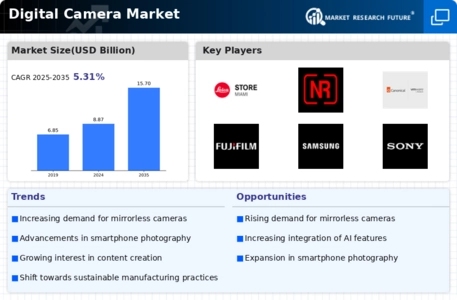
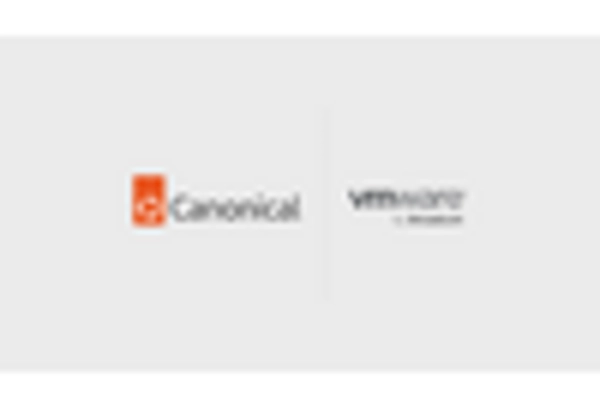
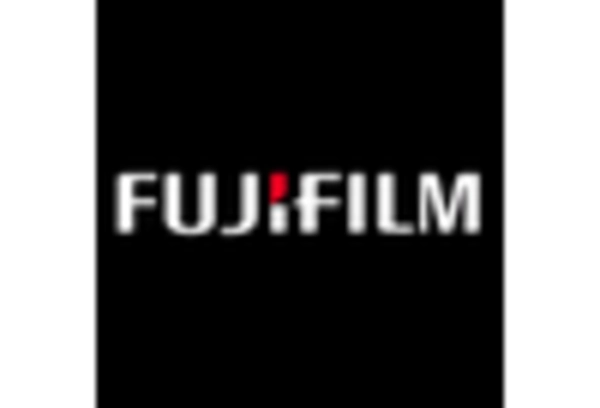


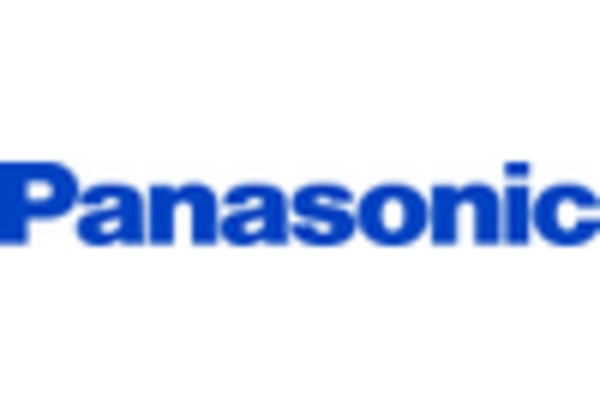
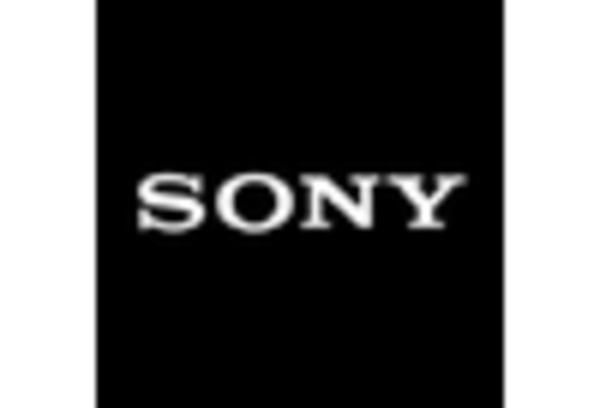









Leave a Comment